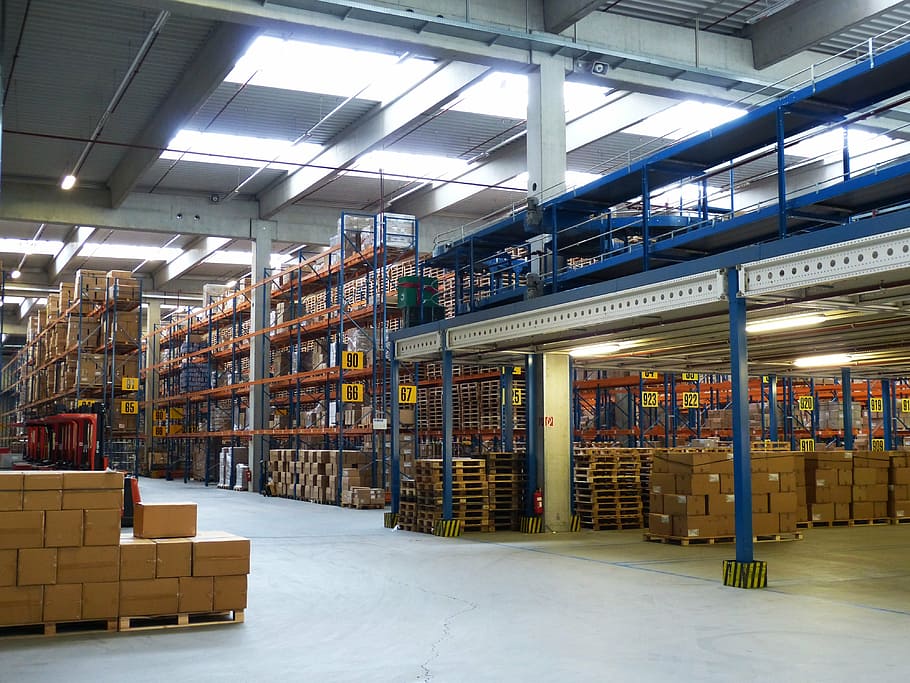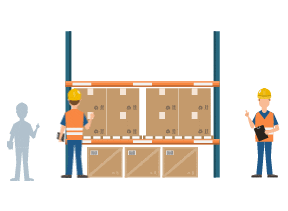
Warehouses in India are undergoing a transformation. From manual processes to automated systems, technology is reshaping supply chains. Automation promises improved efficiency, accuracy and speed for Indian warehouses under pressure to meet rising ecommerce demand. This blog explores key warehouse automation technologies revolutionizing the sector.

Types of Warehouse Automation Technologies
AS/RS: Automated storage and retrieval systems like automatic pallet racks create high density storage space. By using automated cranes and shuttles, they automate storage and retrieval of loads without human intervention. This optimized vertical space usage and inventory tracking helps maximize warehouse capacity.
AGVs: Automated guided vehicles are smart driverless carts that can transport materials between different warehouse areas. They follow predefined routes and avoid obstacles using sensors and software. AGVs automate internal transport and minimize labor requirements.
Robotics: Robotic arms automate repetitive picking tasks with consistent speed and accuracy. They can work 24/7 and integrate with AS/RS systems. Robots optimize order fulfillment and reduce reliance on error-prone manual picking.
Conveyors: Conveyor systems automate product flows using roller, belt, towline or wheel based automated motion. They connect warehouse areas for streamlined material movement. Conveyors boost process speed and efficiency.
WMS: Warehouse management software centralizes tracking of inventory, orders, labor and material flows. WMS integrates automation systems for optimization across the warehouse. It gives real-time visibility and control.
Benefits of Warehouse Automation
Increased Throughput and Capacity
By using automated technology instead of manual labor, warehouses can achieve higher output volume. Automated systems can work 24/7 at consistent speeds unmatched by humans. This results in higher warehouse throughput. It also enhances capacity and storage density.
Improved Accuracy
Automated systems like AS/RS, AGVs and robotics perform tasks consistently without human errors. Inventory counts, order picking and material tracking accuracy improves sharply compared to manual handling. This results in fewer order errors and optimized inventory.
Faster Fulfillment
Automation speeds up key warehouse processes like order picking, packing and dispatch. Conveyors, AGVs and sorting systems accelerate material flows. This allows companies to promise and achieve quicker deliveries as well as respond better to customer demands.
Reduced Labor Costs
Automating certain warehouse activities reduces dependency and costs associated with manual labor. Robots and automated systems optimize labor utilization for more strategic roles. Warehouse automation drives significant cost savings in the long run.
Enhanced Safety
Automated technologies complete risky material handling tasks with fewer accidents and injuries compared to human workers. Hazards related to forklifts, working at heights and overexertion are minimized. This makes the warehouse floor safer for employees.
Superior Data and Analytics
Automation systems provide far greater transparency through data on inventory status, orders, equipment performance and more. Analytics derived from this data optimizes planning and decision making across the supply chain.
Key Statistics on Warehousing Industry in India
- India’s warehousing sector will grow at a CAGR of 10% to reach INR 970 billion by FY24.
- Total warehousing stock in top 8 Indian cities stands at 211 million square feet in 2021.
- Overall warehousing capacity utilization was 65-70% in 2018 indicating opportunity for further growth.
- Organized warehousing penetration was low at 10% of total warehousing space in 2017 showcasing potential.
Approximately 28% of operational warehouses in India today are automated versus 72% manual.
Applications of Warehouse Automation by Industry
Ecommerce Companies: Ecommerce leaders like Amazon and Flipkart leverage automation to achieve speed, accuracy and efficiency in their fulfilment centers. AGVs transport shelves of products to human pickers at optimized ergonomic workstations.
Retail: Retailers like Walmart use automated storage systems and robotics in distribution centers sending stocks to hundreds of locations. Conveyors and sorters streamline processing.
FMCG: Fast moving consumer goods companies rely on automation for high volume logistics. Pallet shuttles, guided vehicles and automated cranes help achieve scale.
Healthcare: Managing temperature-controlled goods and pharmaceuticals in healthcare products distribution requires automation for consistency in cold storage and cleanrooms.
3PL: Third party logistics firms manage complex supply chain operations across industries using advanced WMS, automated sortation and vision systems.
Challenges in Warehouse Automation Adoption
Upfront Investment Costs Automation requires significant upfront capital expenditure which can deter small firms. Large players like Amazon and Flipkart can better absorb these costs.
Low Labor Costs Labor costs are still economical for many warehouses in India. As automation gets cheaper, this calculation can change.
Lack of Internal Expertise Warehouses need supply chain professionals experienced in managing automated technologies for successful implementation.
Integration Difficulties Connecting automation systems like robotics, AGVs and WMS with existing warehouse infrastructure can prove complex.
Lack of Support Infrastructure India still lacks extensive support systems required for maintaining and upgrading automation equipment.
The Road Ahead for Automated Warehouses
- Adoption is picking up with growing demand. Warehouses above 50,000 sq ft are deploying automation.
- Falling costs of robotics will drive increased uptake beyond large players.
- Automation specialists are gaining experience implementing projects, aiding future growth.
- Support infrastructure of integrators and engineering service providers is expanding.
- Government initiatives like GST are consolidating warehouses aiding automation scalability.
Automated technologies are steadily mainstreaming in India’s booming warehousing and logistics sector.
As the statistics show, there is massive headroom for adoption to enhance efficiency, accuracy and speed. Companies investing smartly in automation will gain a competitive edge with happier customers and optimized operations.
With technologies like robotics and AGVs becoming more affordable, automated warehouses are the future.
